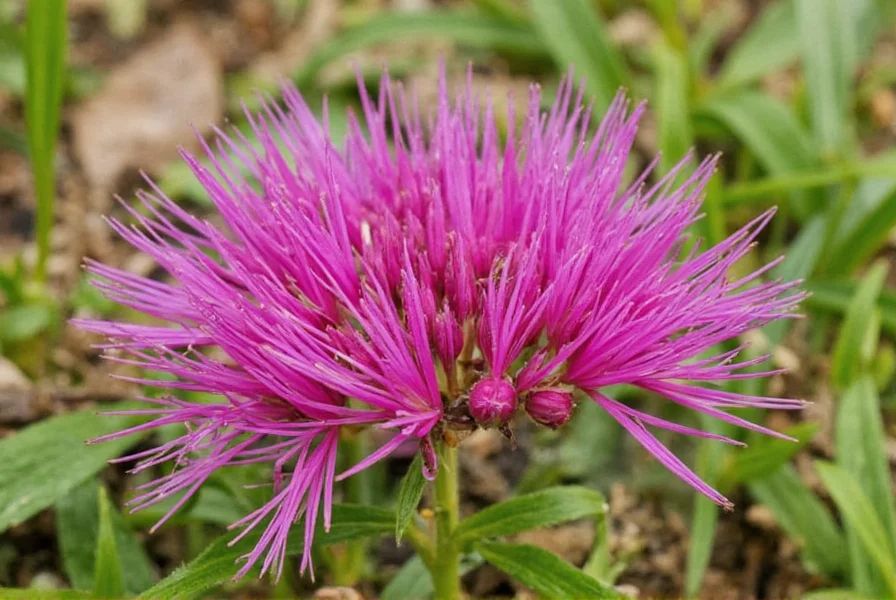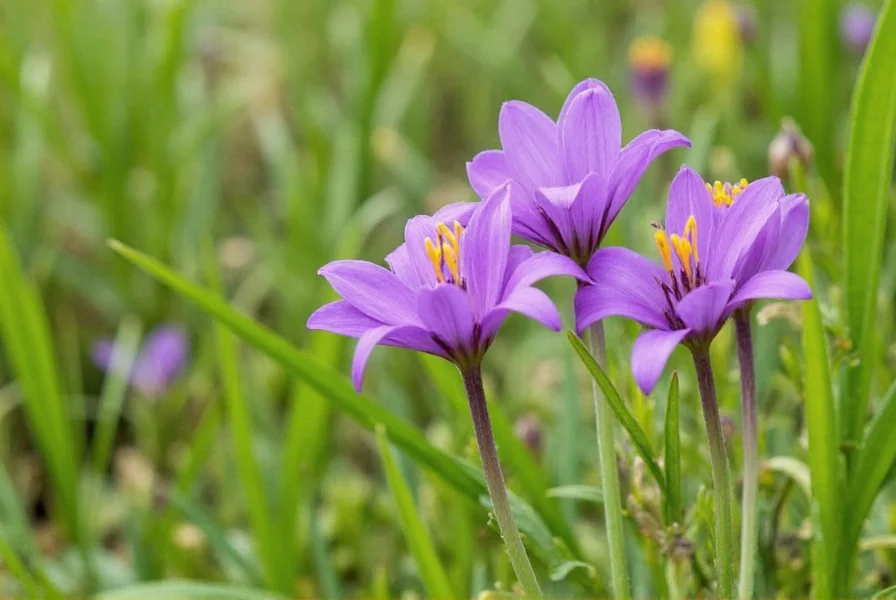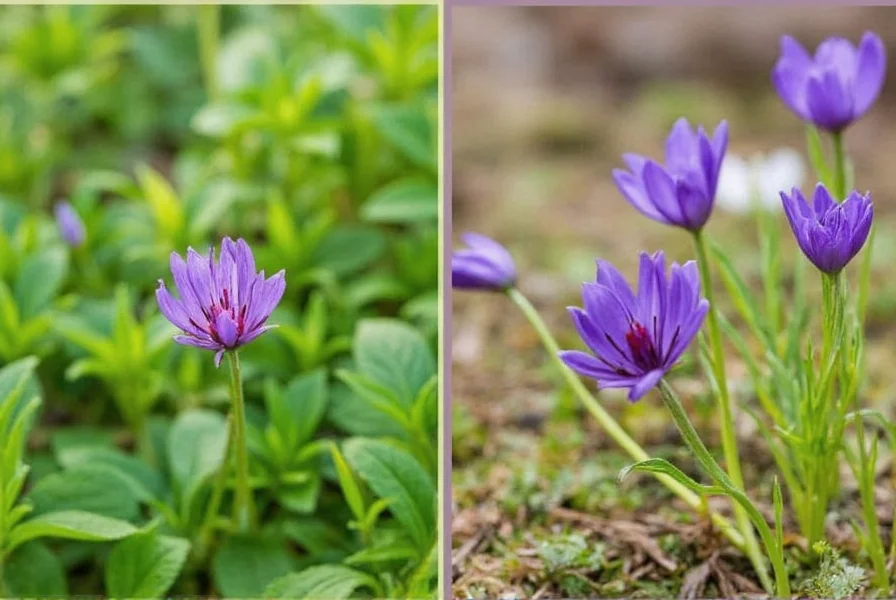Growing saffron may seem daunting given its status as the world's most expensive spice, but cultivating Crocus sativus is surprisingly accessible for home gardeners. This detailed guide provides everything you need to know about how to grow saffron plant successfully, whether you're working with a small garden plot or containers on your patio.
Understanding Saffron and Its Growing Requirements
Saffron isn't a plant you buy as seeds—it comes from the stigmas of the Crocus sativus flower, a fall-blooming crocus species. Each delicate purple flower produces just three red stigmas that become saffron threads when dried. These corms (bulb-like structures) require specific conditions to thrive, making understanding their natural habitat crucial for successful cultivation.
The saffron crocus originates from regions with hot, dry summers and cool, wet springs—conditions you'll need to replicate for optimal growth. Unlike many garden plants, saffron has a unique growing cycle that aligns with late summer planting and autumn blooming.

Best Time to Plant Saffron Crocus
Timing is critical when learning how to plant saffron crocus bulbs. Plant your corms in late summer (August or September in the Northern Hemisphere), approximately 6-8 weeks before your first expected fall frost. This timing allows the corms to establish roots during warm soil conditions while avoiding premature sprouting.
In regions with mild winters, plant earlier in the season; in colder climates, plant closer to the first frost date. The corms need warm soil (70-80°F/21-27°C) for root development but require cooler temperatures (50-65°F/10-18°C) to trigger flowering.
Soil Requirements for Growing Saffron
The best soil for growing saffron mimics its native Mediterranean conditions—sandy, loamy, and exceptionally well-draining. Poor drainage is the primary cause of saffron cultivation failure, as corms will rot in waterlogged conditions.
| Soil Component | Recommended Percentage | Purpose |
|---|---|---|
| Garden soil | 40% | Provides base nutrients |
| Coarse sand | 30% | Enhances drainage |
| Compost | 20% | Supplies organic matter |
| Perlite or pumice | 10% | Prevents compaction |
Maintain a slightly alkaline soil pH between 6.0 and 8.0. Test your soil before planting and amend as needed with garden lime to raise pH or elemental sulfur to lower it. For container growing, use a high-quality potting mix specifically formulated for bulbs.
Planting Saffron Corms Properly
When planting saffron corms, follow these precise guidelines for optimal results:
- Depth: Plant corms 4-6 inches (10-15 cm) deep, measured from the base of the corm
- Spacing: Space corms 4-6 inches (10-15 cm) apart in all directions
- Orientation: Position corms with the pointed end facing upward
- Soil coverage: Cover with soil and gently firm without compacting
For growing saffron in containers, choose pots at least 8 inches deep with excellent drainage holes. Fill with your prepared soil mix, plant corms at the recommended depth and spacing, then water thoroughly. Container-grown saffron requires more frequent watering than in-ground plants.
Watering Requirements for Saffron Plants
Watering is one of the most critical aspects of saffron cultivation. After planting, water thoroughly to settle the soil around the corms. Then, maintain slightly moist (not wet) soil conditions until growth appears.
Once established, saffron has moderate water needs:
- During active growth (after sprouting): Water when the top inch of soil feels dry
- During flowering period: Maintain consistent moisture to support bloom development
- During summer dormancy: Water sparingly or not at all, depending on rainfall
Overwatering is the most common mistake in saffron plant care requirements. The corms need moisture to grow but will rot if left in saturated soil. In regions with heavy rainfall, consider raised beds or containers to ensure proper drainage.
Sunlight and Temperature Needs
Saffron crocus requires full sun exposure for optimal growth and flowering. Choose a planting location that receives at least 6-8 hours of direct sunlight daily. While the plants can tolerate partial shade, reduced sunlight typically results in fewer blooms and lower saffron yields.
The ideal saffron cultivation temperature requirements include:
- Summer dormancy: Hot, dry conditions (80-100°F/27-38°C)
- Root development: Warm soil (70-80°F/21-27°C)
- Flowering period: Cool temperatures (50-65°F/10-18°C)
- Winter dormancy: Temperatures down to 15°F (-9°C) are tolerable
In warmer climates (USDA zones 8-10), saffron may need artificial chilling before planting to simulate winter conditions. Refrigerate corms for 4-6 weeks before planting to encourage proper flowering.
Fertilizing Saffron Plants
Saffron has modest fertilizer requirements. Excessive nutrients can promote foliage growth at the expense of flowers. Follow this simple fertilization schedule:
- At planting: Mix a balanced, slow-release fertilizer (5-10-10) into the soil
- When shoots appear: Apply a light dose of phosphorus-rich fertilizer
- After flowering: Add compost or well-rotted manure to replenish nutrients
Avoid high-nitrogen fertilizers, which encourage leaf growth but reduce flower production. Organic options like bone meal provide the phosphorus saffron needs for robust flowering without excessive vegetative growth.
Harvesting Saffron: Timing and Technique
Knowing when to harvest saffron threads is crucial for quality. Saffron flowers typically bloom in mid to late autumn, opening at dawn and closing by midday. Harvest flowers early in the morning when they're fully open but before the heat of the day causes them to wilt.
Follow these harvesting steps:
- Pick flowers gently by grasping the base of the bloom
- Place harvested flowers in a shallow basket or tray
- Process flowers the same day—they deteriorate quickly
- Remove stigmas using tweezers or fingernails (three per flower)
- Handle stigmas gently to avoid bruising
Each flower produces only three stigmas, which explains saffron's high value. It takes approximately 150 flowers (450 stigmas) to yield just 1 gram of dried saffron.

Drying and Storing Saffron Properly
Proper drying preserves saffron's flavor, color, and aroma. After harvesting the stigmas, follow these steps for how to dry saffron threads after harvesting:
- Spread stigmas in a single layer on a clean, dry surface
- Air-dry in a warm, dark place with good air circulation for 12-24 hours
- Alternatively, use a food dehydrator at 150°F (65°C) for 2-3 hours
- Test for dryness—threads should be brittle but not burnt
- Store in an airtight container away from light and moisture
For long-term storage, keep dried saffron in a cool, dark place. Properly stored saffron maintains its quality for 2-3 years, though peak flavor occurs within the first year. Never store saffron in the refrigerator due to moisture risks.
Troubleshooting Common Saffron Growing Problems
Even with careful attention to saffron plant care requirements, you may encounter these common issues:
Poor Flower Production
Cause: Corms planted too shallow, insufficient chilling, excessive nitrogen, or poor soil drainage
Solution: Ensure proper planting depth (4-6 inches), provide adequate summer dormancy conditions, and use phosphorus-rich fertilizer
Corm Rot
Cause: Overwatering or poor drainage
Solution: Improve soil drainage with sand or perlite, reduce watering frequency, and consider raised beds
Few Stigmas Per Flower
Cause: Nutrient imbalance, insufficient sunlight, or poor-quality corms
Solution: Ensure full sun exposure, use balanced fertilizer, and purchase high-quality corms from reputable suppliers
Pests and Diseases
Saffron crocus is relatively pest-resistant but may occasionally face:
- Voles and mice: Protect corms with wire mesh baskets
- Fusarium: Avoid overwatering and rotate planting locations
- Aphids: Spray with insecticidal soap if infestation occurs
Maximizing Your Saffron Yield
To get the most from your saffron crop, consider these advanced techniques:
- Plant corms in successive layers at different depths for staggered blooming
- Use black plastic mulch to warm soil in spring and maintain moisture
- Divide and replant corms every 3-4 years to maintain vigor
- Keep detailed records of planting dates, bloom times, and yields
Remember that saffron crocus produces flowers only once per year, typically in its second growing season. Be patient—while you may see some blooms in the first autumn after planting, maximum yields usually occur in years 2-4 as the corms multiply and establish.
Frequently Asked Questions About Growing Saffron
How long does it take to grow saffron from planting to harvest?
Saffron crocus typically blooms 6-10 weeks after planting corms in late summer. The first flowers appear in autumn of the planting year, with harvesting occurring approximately 2 months after planting. However, maximum yields develop over 2-4 years as the corms multiply and establish.
Can I grow saffron indoors or in containers?
Yes, saffron grows well in containers with proper drainage. Use pots at least 8 inches deep filled with a sandy, well-draining mix. Place containers in full sun and follow the same planting depth and spacing guidelines as for in-ground cultivation. Container-grown saffron requires more frequent watering but offers better control over soil conditions.
How many saffron threads can I expect from each plant?
Each saffron crocus flower produces exactly three stigmas (threads). A healthy corm typically produces 3-5 flowers in its first year, increasing to 5-10 flowers by the third year as the corm multiplies. It takes approximately 150 flowers (450 threads) to yield 1 gram of dried saffron.
Why aren't my saffron plants flowering?
Lack of flowering typically results from improper planting depth (too shallow), insufficient summer dormancy, poor drainage causing corm rot, or inadequate chilling before planting in warm climates. Ensure corms are planted 4-6 inches deep in well-draining soil, receive proper summer dry periods, and get adequate chilling (4-6 weeks at 40-45°F) if growing in zones 8+.
How do I know when saffron is ready to harvest?
Saffron flowers are ready to harvest when they fully open at dawn. The best time to pick them is early morning when the purple petals are completely unfurled and the red stigmas are visible. Harvest daily during the blooming period (typically 2-3 weeks in autumn), as flowers open and close within a single day.











 浙公网安备
33010002000092号
浙公网安备
33010002000092号 浙B2-20120091-4
浙B2-20120091-4